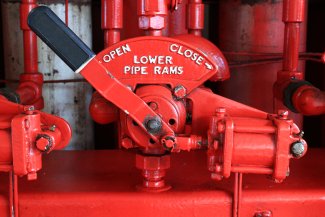Safety Offshore

Price
Add to Cart
Safety Offshore
Offshore safety management and the implementation of a SEMS program has much in common with other process industries, particularly onshore facilities such as refineries, pipelines and chemical plants. However, each industry does have its unique safety issues and problems. For example, a chemical plant will often either manufacture or use some highly toxic compounds that have to be handled with special equipment or materials of construction. Refineries have many processing steps that often operate at higher temperatures and pressures. And the pipeline business works in an environment where most of its operations are in public locations and close to where people live and work, so any type of leak is likely to quickly have a significant public impact.
The offshore business does not have to address most of the above problems. For example, offshore platforms use various chemicals such as methanol and monoethylene glycol for hydrate removal. Although these chemicals are toxic and flammable, they do not compare to some of the chemicals found in a typical chemical plant or refinery. Moreover, the quantities used offshore are quite small as compared with a typical onshore facility. Generally the chemicals are supplied in tote tanks that are offloaded from a supply boat and stored at a dedicated section of the deck.
In addition, operating conditions on offshore platforms tend to be less severe than those in chemical plants and refineries. Temperatures and pressures are usually quite low, and the process steps consist mainly of the physical separation of oil, water and gas. Even if there is a chemical processing step, such as the removal of hydrogen sulfide from the gas stream, the process is likely to be fairly simple — certainly when compared to onshore chemical plants. Finally, offshore platforms, unlike onshore pipelines, are pretty much out of the public eye. Unless a platform or rig has a very serious spill, offshore events are not likely to directly impact members of the public.
Nevertheless, the offshore business also has its own special safety issues. They include the following:
- Lack of escape routes;
- Persons on board;
- Cyclones/hurricanes;
- Downers and leaners;
- Blowouts;
- Hydrogen sulfide;
- Dropped objects;
- Helicopters; and
- Ship collision.
This ebook provides an overview of some of the special safety issues that the offshore oil and gas industries must address.
Table of Contents
Introduction
Drilling, production and pipelines
Drilling
Production
Pipelines
Offshore safety issues
Congestion
Escape in an emergency
Ignition sources
Persons on board
Hurricanes/cyclones
Gulf of Mexico
Downers and leaners
Blowouts
Hydrogen sulfide
Dropped objects
Helicopter operations
Ship collisions
